O. Reg. 620/05: HIGH OCCUPANCY VEHICLE LANES, Highway Traffic Act, R.S.O. 1990, c. H.8
Highway Traffic Act
Code de la route
ONTARIO REGULATION 620/05
HIGH OCCUPANCY VEHICLE LANES
Historical version for the period December 1, 2005 to July 16, 2007.
No amendments.
This Regulation is made in English only.
CONTENTS
Designation of high occupancy vehicle lanes | |
Use of high occupancy vehicle lanes | |
Buffer zones | |
Roadway markings | |
Signs | |
Highway no. 404 | |
Highway no. 403 |
Designation of high occupancy vehicle lanes
1. The left lane of the part of the King’s Highway described in a schedule to this Regulation is designated as a high occupancy vehicle lane for the hours, days and months specified in the schedule. O. Reg. 620/05, s. 1.
Use of high occupancy vehicle lanes
2. No person shall operate a motor vehicle or a commercial motor vehicle in a high occupancy vehicle lane unless one of the following circumstances exists:
1. In the case of a motor vehicle, the vehicle has at least two persons occupying seating positions.
2. In the case of a commercial motor vehicle,
i. the vehicle has at least two persons occupying seating positions, and
ii. the length of the vehicle or the total length of the vehicle and any vehicle being towed is less than 6.5 metres.
3. The vehicle is a bus.
4. The person is operating an emergency vehicle, as defined in section 144 of the Act, in the performance of his or her duties.
5. The person is operating the vehicle in the lawful performance of his or her duties as a police officer.
6. The person is operating a vehicle owned or leased by the Province of Ontario in the lawful performance of his or her duties as an officer appointed for carrying out the provisions of the Act.
7. The person is operating a vehicle engaged in road construction or maintenance activities in or near the high occupancy vehicle lane.
8. The person is operating a tow truck that has been requested to provide towing or repair services to a disabled vehicle in or near a high occupancy vehicle lane by a police officer, an officer appointed for carrying out the provisions of the Act, or a person driving the disabled vehicle, and operating the tow truck in the high occupancy vehicle lane is necessary to attend at and depart from the location of the disabled vehicle. O. Reg. 620/05, s. 2.
Buffer zones
3. (1) Entry and exit points at which vehicles may enter or exit high occupancy vehicle lanes are located between buffer zones, illustrated in Figure A in section 4. O. Reg. 620/05, s. 3 (1).
(2) No person shall operate a motor vehicle or commercial motor vehicle to enter or exit a high occupancy vehicle lane by crossing a buffer zone, unless the movement can be made safely and one of the following circumstances exists:
1. A police officer directs the person to make the movement.
2. The person is operating an emergency vehicle, as defined in section 144 of the Act, in the performance of his or her duties.
3. The person is operating the vehicle in the lawful performance of his or her duties as a police officer.
4. The person is operating a vehicle owned or leased by the Province of Ontario in the lawful performance of his or her duties as an officer appointed for carrying out the provisions of the Act.
5. The person is operating a vehicle engaged in road construction or maintenance activities in or near the high occupancy vehicle lane.
6. The person is operating a tow truck that has been requested to provide towing or repair services to a disabled vehicle in or near a high occupancy vehicle lane by a police officer, an officer appointed for carrying out the provisions of the Act, or a person driving the disabled vehicle, and crossing the buffer zone is necessary to attend at and depart from the location of the disabled vehicle.
7. The person is complying with the requirements of section 159 or 159.1 of the Act. O. Reg. 620/05, s. 3 (2).
(3) Subsection 148 (2) of the Act does not apply to a person operating a vehicle in a high occupancy vehicle lane. O. Reg. 620/05, s. 3 (3).
Roadway markings
4. A high occupancy vehicle lane shall have the following roadway markings, as illustrated in Figure A:
1. Painted white diamond markings on the surface of the roadway of the high occupancy vehicle lane, placed periodically along the length of the lane.
2. Painted white buffer zone markings on the surface of the roadway separating high occupancy vehicle lanes from other highway lanes.
3. Painted white continuity lane markings on the surface of the roadway between buffer zones indicating points at which vehicles may enter or exit a high occupancy vehicle lane.
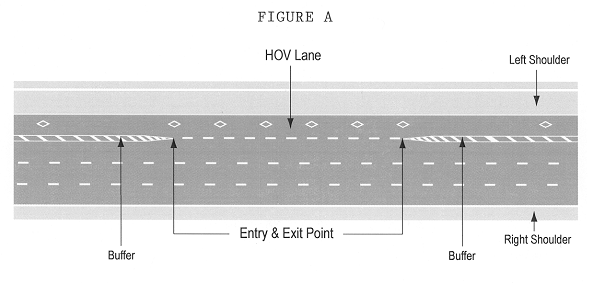
O. Reg. 620/05, s. 4.
Signs
5. (1) The commencement of a high occupancy vehicle lane shall be indicated by an overhead sign that has the dimensions and bears the markings as illustrated in Figure B.
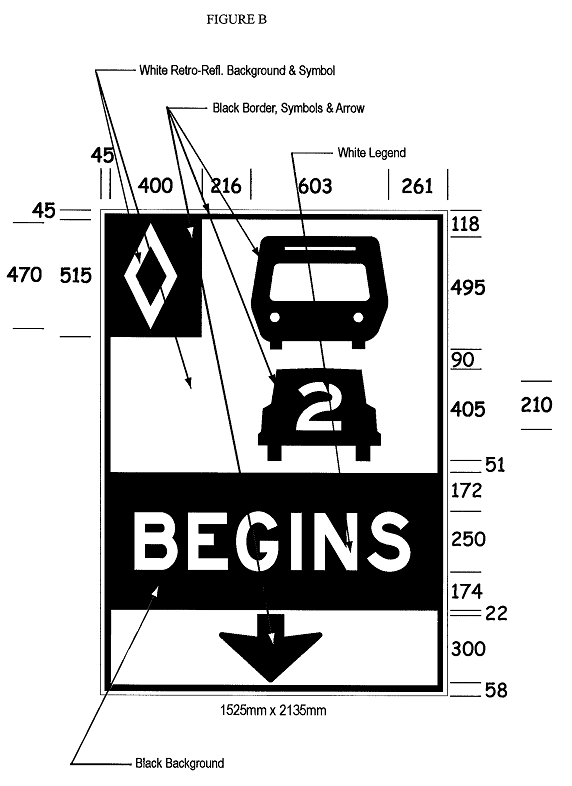
O. Reg. 620/05, s. 5 (1).
(2) Despite subsection (1), in an area designated in the Schedule to the French Language Services Act, the commencement of a high occupancy vehicle lane shall be indicated by an overhead sign that has the dimensions and bears the markings as illustrated in Figure C.
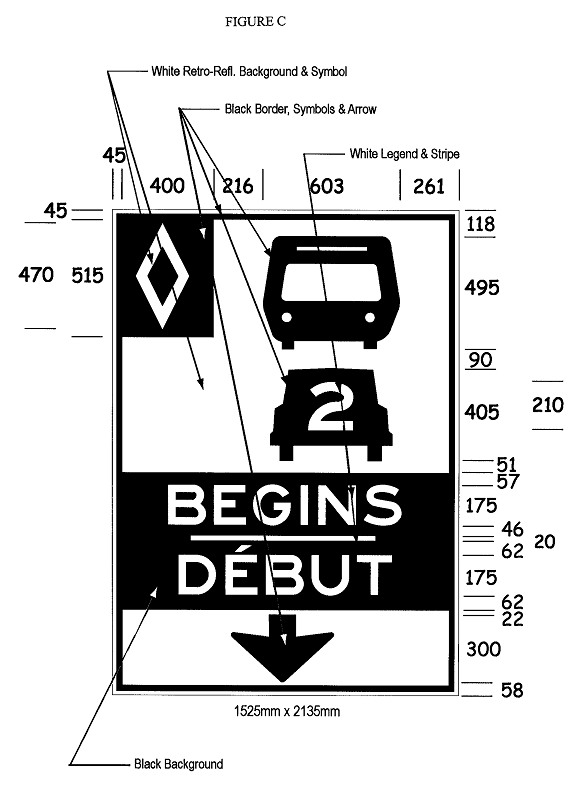
O. Reg. 620/05, s. 5 (2).
(3) High occupancy vehicle lane signs shall be erected along the length of a high occupancy vehicle lane and shall have the dimensions and bear the markings as illustrated in Figure D:
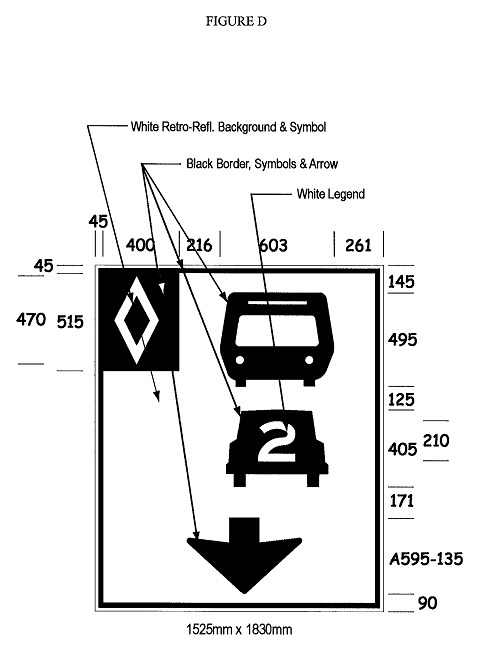
O. Reg. 620/05, s. 5 (3).
(4) High occupancy vehicle lane signs shall not be more than four kilometres apart from each other. O. Reg. 620/05, s. 5 (4).
(5) The end of a high occupancy vehicle lane shall be indicated by an overhead sign that has the dimensions and bears the markings as illustrated in Figure E or by a ground mounted sign that has the dimensions and bears the markings as illustrated in Figure F.
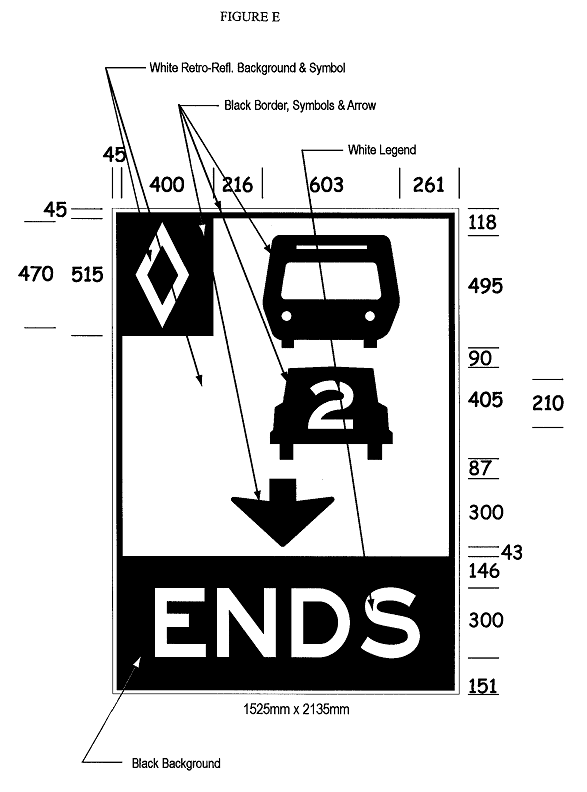
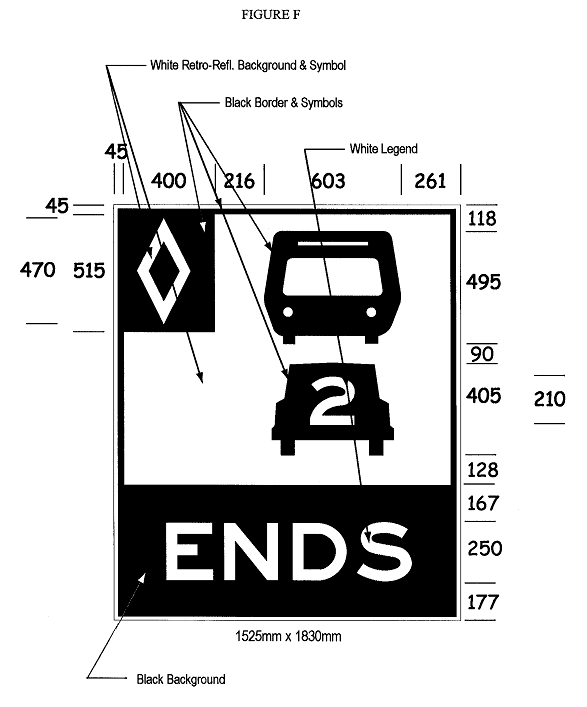
O. Reg. 620/05, s. 5 (5).
(6) Despite subsection (5), in an area designated in the Schedule to the French Language Services Act, the end of a high occupancy vehicle lane shall be indicated by an overhead sign that has the dimensions and bears the markings as illustrated in Figure G or by a ground mounted sign that has the dimensions and bears the markings as illustrated in Figure H.
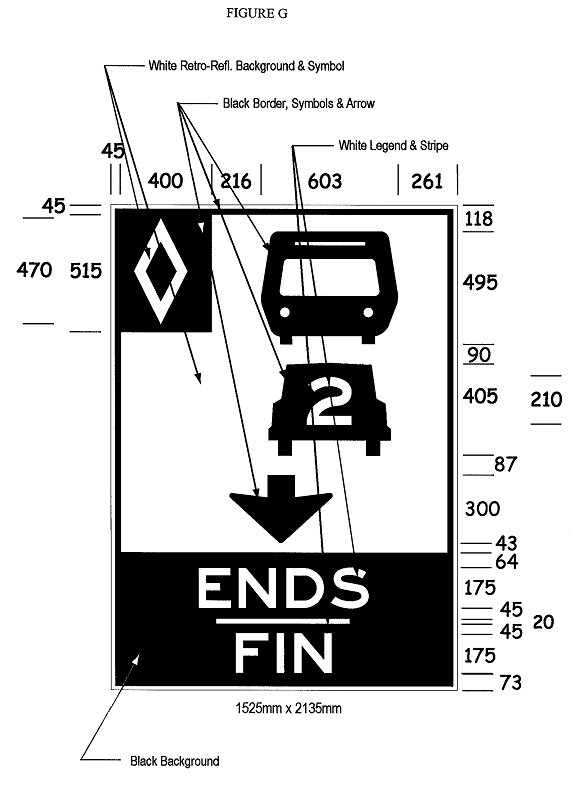
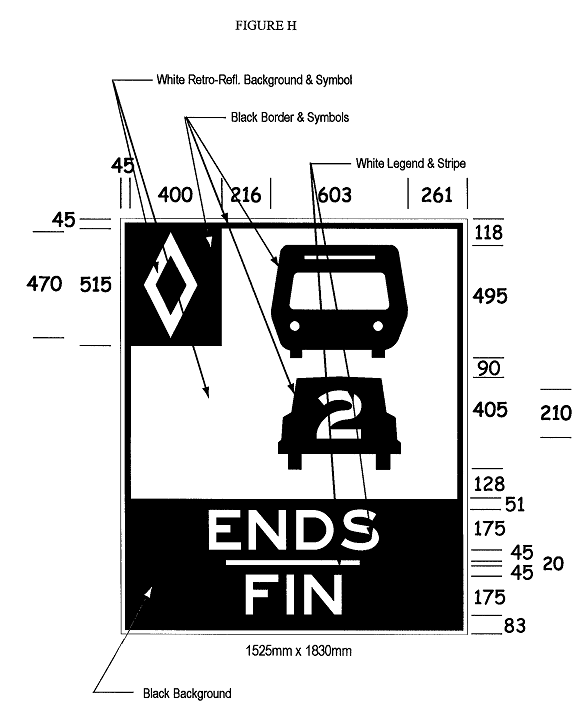
O. Reg. 620/05, s. 5 (6).
(7) A sign prohibiting the crossing of a buffer zone shall have the dimensions and bear the markings as illustrated in,
(a) Figure I or J, if the sign is an overhead sign; or
(b) Figure K or L, if the sign is a ground mounted sign.
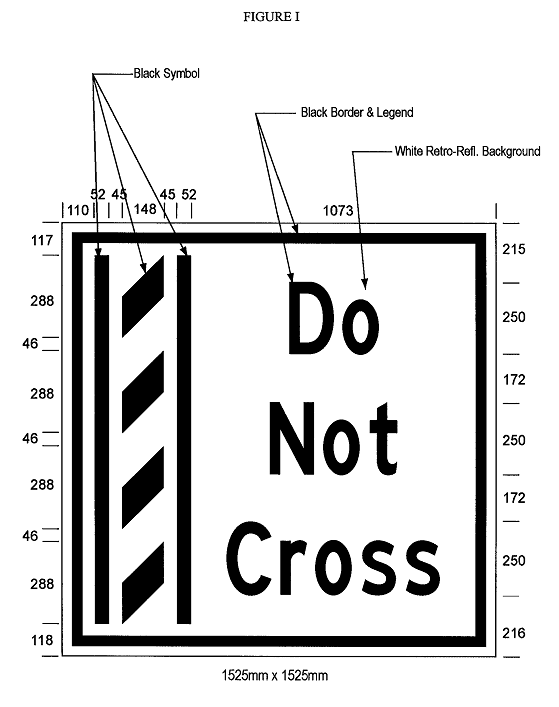
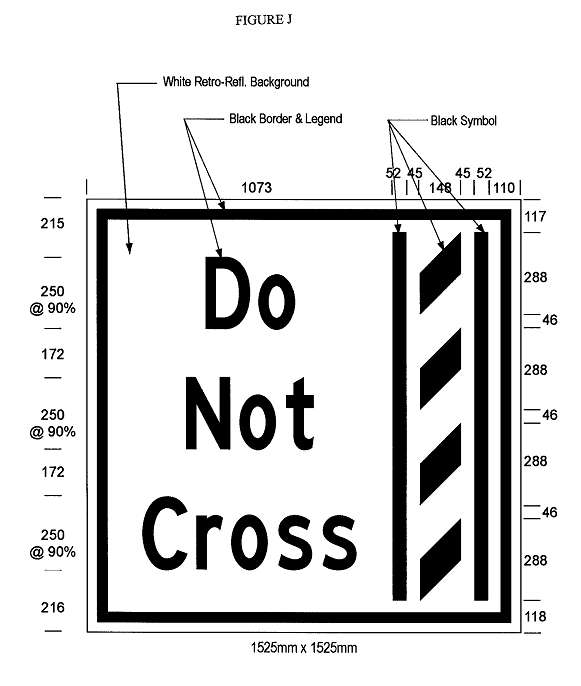
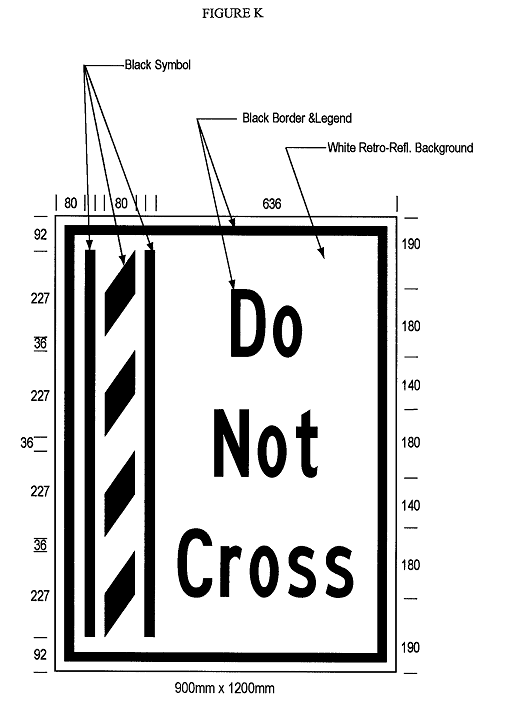
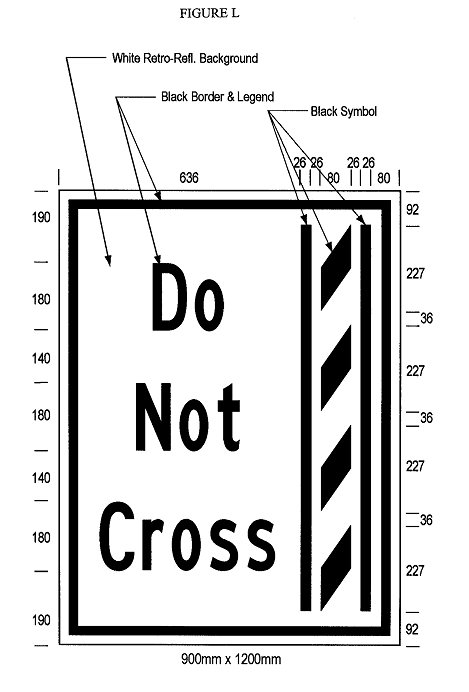
O. Reg. 620/05, s. 5 (7).
(8) Despite subsection (7), in an area designated in the Schedule to the French Language Services Act, a sign prohibiting the crossing of a buffer zone shall have the dimensions and bear the markings as illustrated in,
(a) Figure M or N, if the sign is an overhead sign; or
(b) Figure O or P, if the sign is a ground mounted sign.
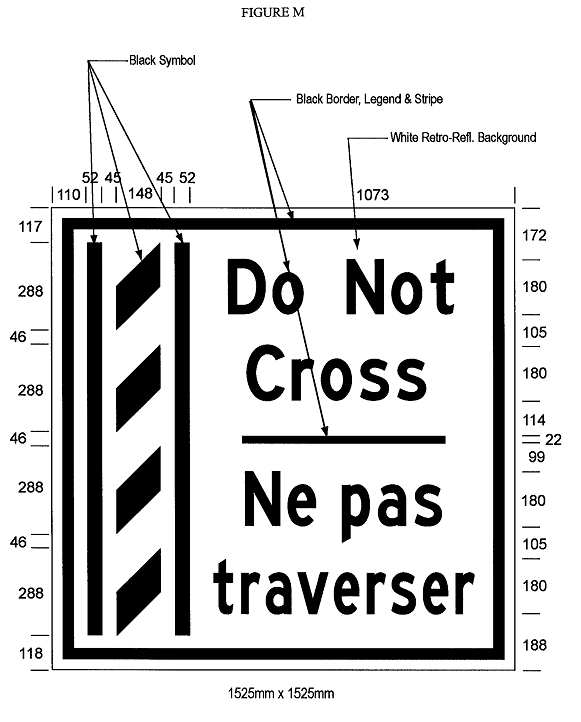
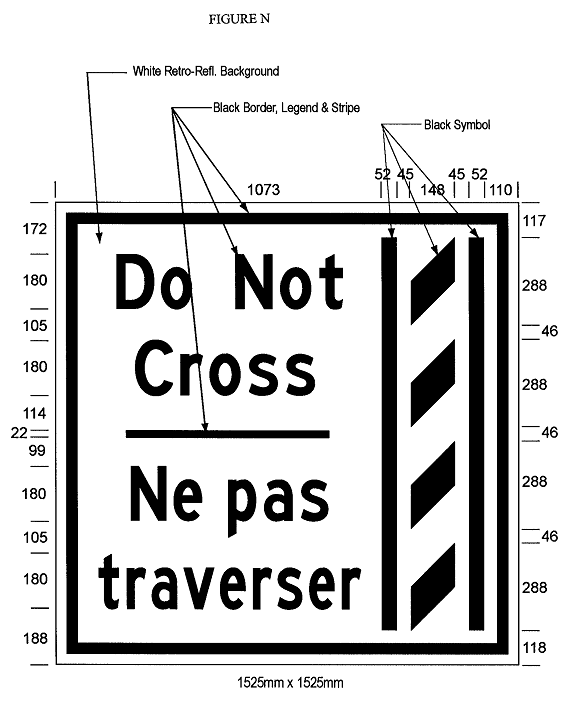
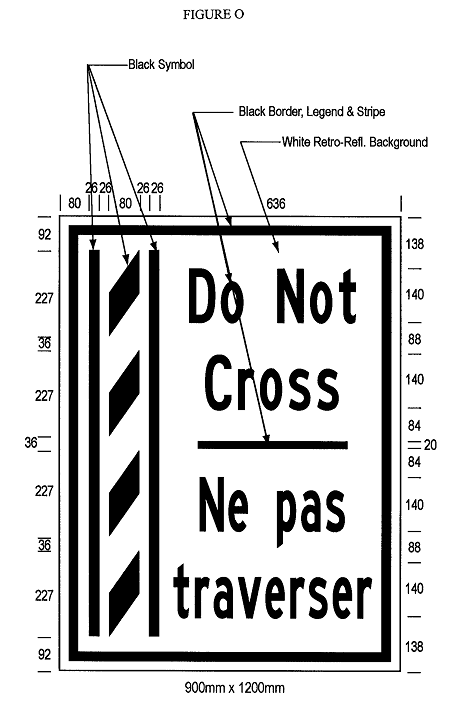
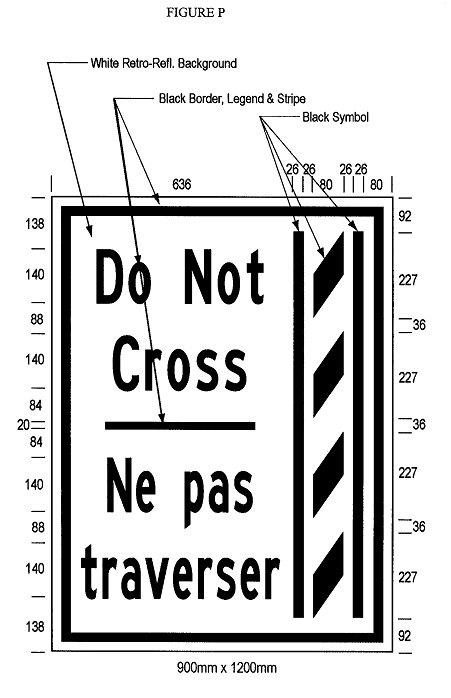
O. Reg. 620/05, s. 5 (8).
(9) The dimensions of a sign may differ from those prescribed in this section as long as the dimensions are in the same proportion to each other as the dimensions prescribed in this section are to each other. O. Reg. 620/05, s. 5 (9).
(10) An overhead sign shall be erected directly above the high occupancy vehicle lane and a ground mounted sign shall be erected on the side of the highway facing approaching traffic. O. Reg. 620/05, s. 5 (10).
6. Omitted (provides for coming into force of provisions of this Regulation). O. Reg. 620/05, s. 6.
1. (1) That part of the King’s Highway known as No. 404 (southbound) lying between a point situate 1,100 metres measured southerly from its intersection with the centre line of the roadway known as 16th Avenue in The Regional Municipality of York, and a point 1,090 metres measured southerly from its intersection with the centre line of the roadway known as Sheppard Avenue in the City of Toronto.
(2) This designation is effective 24 hours a day, seven days a week and every month of the year.
O. Reg. 620/05, Sched. A.
1. (1) That part of the King’s Highway known as No. 403 (eastbound) in the City of Mississauga in The Regional Municipality of Peel lying between a point situate 886 metres measured westerly from its intersection with the centre line of the roadway known as Winston Churchill Boulevard, and a point situate 30 metres measured southerly from its intersection with the centre line of the roadway known as Matheson Boulevard.
(2) That part of the King’s Highway known as No. 403 (westbound) in the City of Mississauga in The Regional Municipality of Peel lying between a point situate 150 metres measured easterly from its intersection with the centre line of the roadway known as Matheson Boulevard, and a point situate 520 metres measured easterly from its intersection with the centre line of the roadway known as Winston Churchill Boulevard.
(3) This designation is effective 24 hours a day, seven days a week and every month of the year.
O. Reg. 620/05, Sched. B.